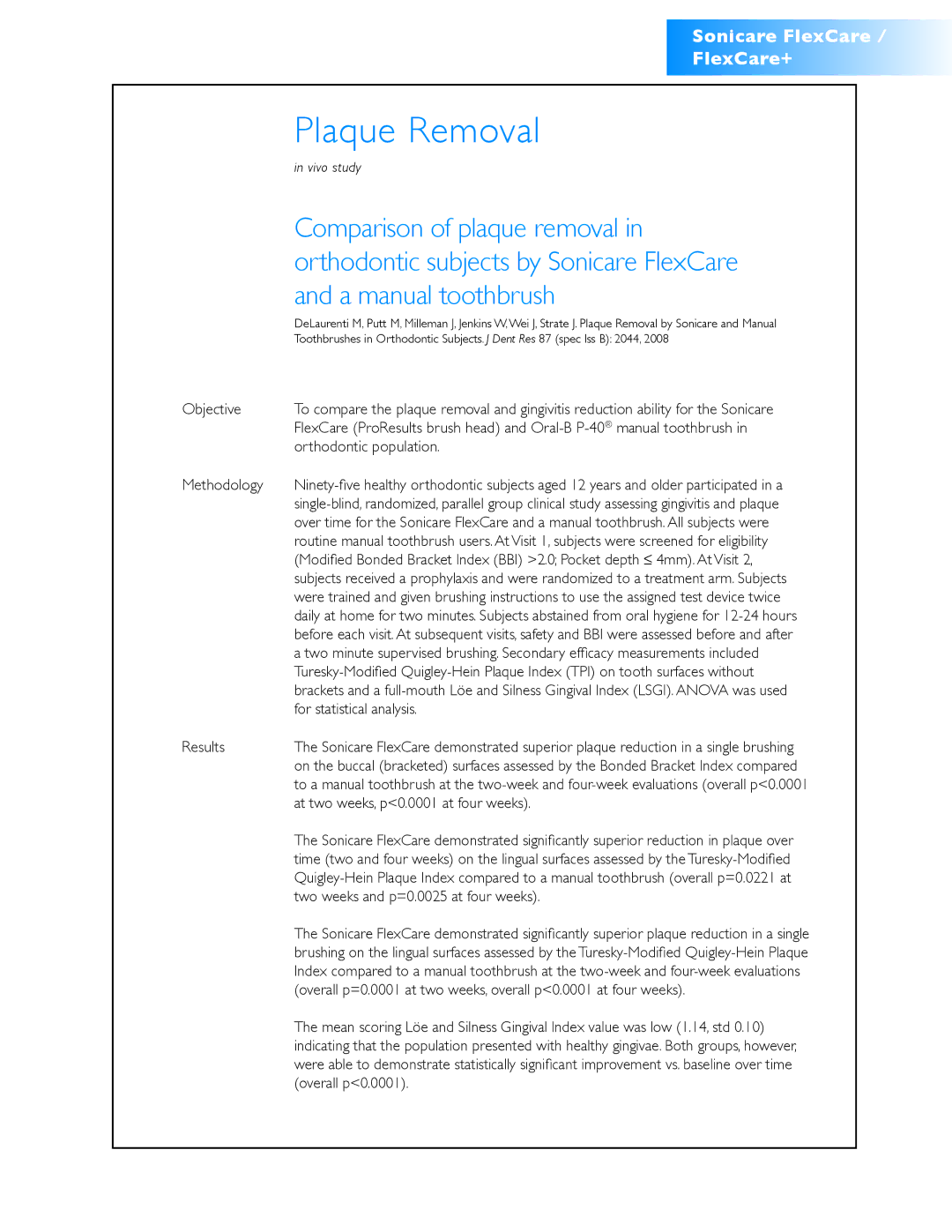Sonicare FlexCare /
FlexCare+
| Plaque Removal |
| in vivo study |
| Comparison of plaque removal in |
| orthodontic subjects by Sonicare FlexCare |
| and a manual toothbrush |
| DeLaurenti M, Putt M, Milleman J, Jenkins W, Wei J, Strate J. Plaque Removal by Sonicare and Manual |
| Toothbrushes in Orthodontic Subjects. J Dent Res 87 (spec Iss B): 2044, 2008 |
Objective | To compare the plaque removal and gingivitis reduction ability for the Sonicare |
| FlexCare (ProResults brush head) and |
| orthodontic population. |
Methodology | |
| |
| over time for the Sonicare FlexCare and a manual toothbrush. All subjects were |
| routine manual toothbrush users. At Visit 1, subjects were screened for eligibility |
| (Modified Bonded Bracket Index (BBI) >2.0; Pocket depth ≤ 4mm). At Visit 2, |
| subjects received a prophylaxis and were randomized to a treatment arm. Subjects |
| were trained and given brushing instructions to use the assigned test device twice |
| daily at home for two minutes. Subjects abstained from oral hygiene for |
| before each visit. At subsequent visits, safety and BBI were assessed before and after |
| a two minute supervised brushing. Secondary efficacy measurements included |
| |
| brackets and a |
| for statistical analysis. |
Results | The Sonicare FlexCare demonstrated superior plaque reduction in a single brushing |
| on the buccal (bracketed) surfaces assessed by the Bonded Bracket Index compared |
| to a manual toothbrush at the |
| at two weeks, p<0.0001 at four weeks). |
| The Sonicare FlexCare demonstrated significantly superior reduction in plaque over |
| time (two and four weeks) on the lingual surfaces assessed by the |
| |
| two weeks and p=0.0025 at four weeks). |
| The Sonicare FlexCare demonstrated significantly superior plaque reduction in a single |
| brushing on the lingual surfaces assessed by the |
| Index compared to a manual toothbrush at the |
| (overall p=0.0001 at two weeks, overall p<0.0001 at four weeks). |
| The mean scoring Löe and Silness Gingival Index value was low (1.14, std 0.10) |
| indicating that the population presented with healthy gingivae. Both groups, however, |
| were able to demonstrate statistically significant improvement vs. baseline over time |
| (overall p<0.0001). |
|
|
